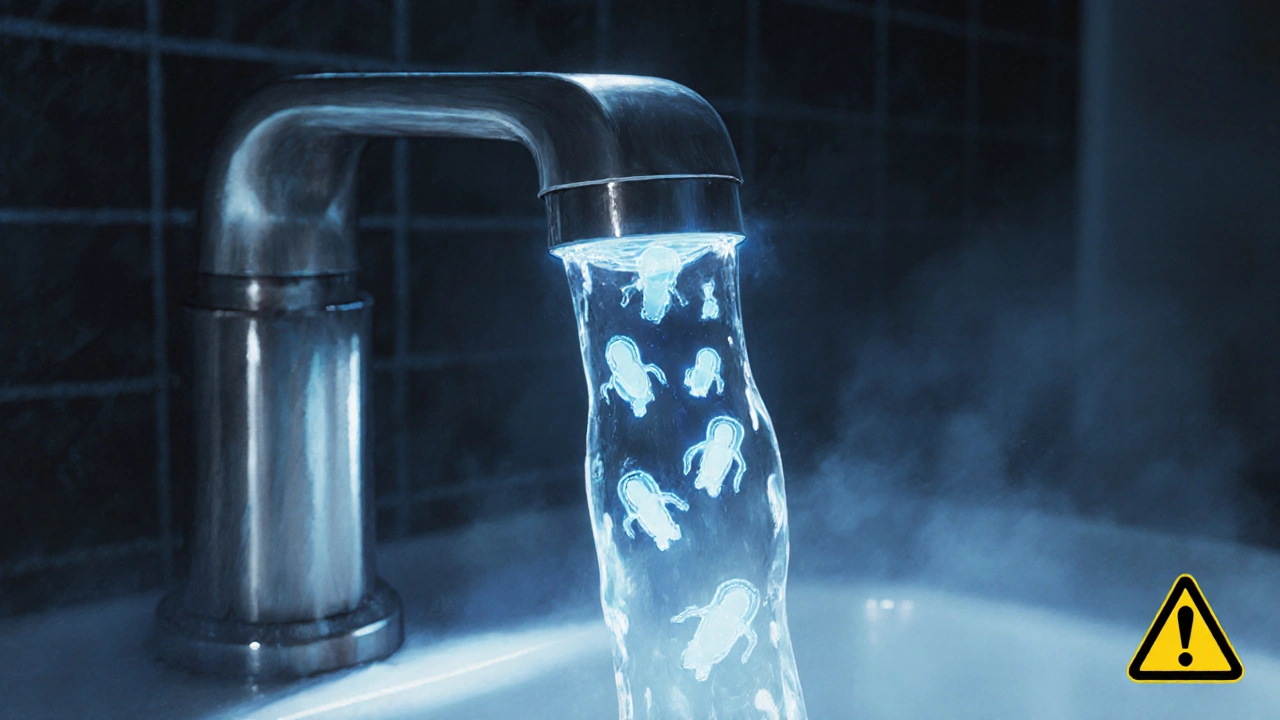
Amoeba Infections in Drinking Water: Risks, Symptoms & Prevention
Learn how hidden amoeba infections threaten water supplies, the diseases they cause, early symptoms, and practical steps to keep your tap water safe.
When you swim in a warm lake or splash around in a poorly maintained pool, you might not think about the tiny organisms hiding in the water. One of them, Naegleria fowleri, a free-living amoeba found in warm freshwater. Also known as the "brain-eating amoeba", it doesn’t eat brain tissue like a predator—it enters through your nose, travels to your brain, and triggers a rare but almost always fatal infection called primary amebic meningoencephalitis (PAM). This isn’t something you catch from drinking water. It’s not contagious. It only happens when water containing the amoeba is forced up your nasal passages—like when you dive, jump, or even use a neti pot with unfiltered water.
Most people never even hear about Naegleria fowleri until it’s too late. That’s because cases are extremely rare—only a few dozen in the U.S. over the last decade. But when it does happen, it moves fast. Symptoms start like a bad cold or flu: headache, fever, nausea. Within days, it turns into stiff neck, confusion, seizures, and coma. There’s no vaccine. No guaranteed cure. Prevention is your only real defense. And that means understanding where this amoeba lives: warm, slow-moving freshwater—especially in southern states during summer heatwaves. It thrives in shallow, sun-warmed ponds, rivers, and even hot springs. Even poorly chlorinated swimming pools or home water systems with stagnant water can become risky if not maintained.
You might wonder: "Can I get this from my tap water?" The answer is almost never—if your water system is properly treated. But if you’re using a neti pot, sinus rinse, or nasal spray, you must use only distilled, sterile, or boiled (and cooled) water. Tap water alone isn’t safe for nasal use. And if you’re swimming in warm freshwater, don’t dive or jump in. Keep your head above water. Use nose clips if you’re worried. These aren’t overcautious tips—they’re the only proven ways to stop this infection before it starts.
There’s no magic pill or supplement that protects you. No herbal remedy works. The only thing that matters is how you interact with water. This isn’t about fear—it’s about awareness. The posts below cover everything from how waterborne amoeba is detected in labs, to real cases linked to household water use, to how public health agencies track outbreaks. You’ll also find advice on safe nasal rinsing, what to do if someone shows early symptoms, and how water treatment systems can prevent contamination. This isn’t a theoretical topic. It’s a quiet, deadly risk that most people ignore until it’s too late. Let’s make sure you’re not one of them.

Learn how hidden amoeba infections threaten water supplies, the diseases they cause, early symptoms, and practical steps to keep your tap water safe.